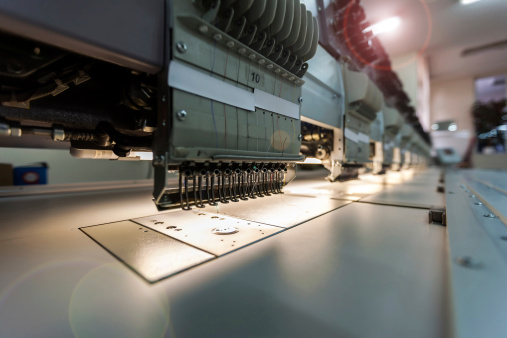Embroidery Digitizers Need Perfect Stitching Balance
The embroidery digitizing in cheap prices must achieve optimal stitching balance. Because embroidered designs shift while stitching, it’s crucial. Large thread areas, dense textiles, and tight bobbin thread create this movement. The embroidery digitizer must consider push and pull when designing.
During embroidery digitizing in cheap prices, the embroidery digitizer must know the design and its complexity. The embroidery digitizer must consider fabric and “push and pull” while allocating stitch kinds. Each digitizing work requires a distinct methodology.
Design appearance depends on stitching balance. It smooths the design and prevents unwanted jumps. Digitizers should deliberately insert facial features and design pieces to minimize jumps. For uniformity and beauty, stitching balance is crucial. An embroidery digitizer must also balance stitches for a great design.
Embroiderers also face distortion. Unbalanced digital designs frustrate beginners. They tighten the hoop or glue the garment. Increase stitch density for embroidery digitizers.
Analyze Artwork
An embroidery digitizing in cheap prices must assess the design’s stitching path and other characteristics before digitizing. Embroidery digitizers must choose the optimal stitching sequence, fabric, and size. Stitches have diverse effects, so they must also be chosen. After understanding the design, the embroidery digitizer may create the embroidery artwork.
Digitizing embroidery is difficult. This ability demands practice and experience. The embroidery digitizer must evaluate the artwork and resize, remove outlining, or enlarge small lettering. It takes time and practice to perfect the design. To avoid mistakes, know the embroidery machine and the medium’s limits.
Advantages of Embroidery Digitizing Service
Choosing a reputable embroidery digitizing provider has several benefits. Embroidered digitizers can verify embroidery design sew-outs. A skilled embroidery digitizer will provide economical services. Choose a reputable embroidery digitizer from the many in the US.
Embroidered artwork or ideas start the process. The digitizer creates an embroidery machine-friendly file. Digitizing a logo or design in stitches requires embroidery software. The embroidery machine operator then inserts the disk with the digital data. Though time-consuming, the result is worth it.
Assign Stitch Types
Next, assign stitch types to the design. The digitizer analyzes the artwork and chooses stitches. Incorrect sewing might cause uneven writing or fabric gaps. Unpatched designs take longer to finish. Smoother designs require less time to embroider.
Understand the Needs
Embroidery digitizers must know the job’s requirements. Embroidery digitizing requirements vary with designs. Machine embroidery is laborious and requires a digitizer to grasp cloth type, thread colors, stitch distance, etc.
Clients have different embroidery digitizing needs. A delicate embroidery pattern may require a different stitch type than a huge one. Good digitizers know how to fix this. Some digitizing tasks take little study, while others do. Ensuring a perfect digitization task requires knowing its prerequisites.
Understand the File Formats
Embroidery digitizers must know the project’s file format before digitizing. Embroidery machines cannot read all file types. Digitizers must format artwork. A little embroidery design may need a few hundred pixels, while a huge one may need hundreds. Embroidery digitizers must also open and store bitmap files.
Understand the Fabric Type
Fabric type is another factor. Silk is too delicate for leather designs. The digitizer must consider the ultimate design size before digitizing it. Designers should also comprehend push and pull compensation for stitching. After analysis, the digitizer should size the design.
Understand the Color Variations
The embroidery digitizer must grasp the design and color variances. Custom digitizing needs color variety. The embroidery digitizer must know how to change colors to get the desired result. High-quality digitizing will produce the best sew-out. Outsourcing embroidery digitizing has several advantages. Outsourcing digitizing lets you hire skilled specialists and get prompt support. It saves time and ensures computerized embroidery quality.
Embroidery Digitizer Must Practice
Embroidery Digitizer Must Practice: Before learning embroidery digitization, you must master the basics. Books, movies, and professionals can teach embroidery digitizing basics. Practice improves digitization. To improve, practice regularly. Even expert digitizers need to practice.
Understand the File Formats
Embroidery digitizing requires no formal training. Design enthusiasts can learn the method. With practice, the embroidery digitizer can master it in months. No shortcuts exist for digitizing needlework, even with software. Practice daily to master the field. Thankfully, numerous embroidery digitizing applications are now accessible. To make the best-embroidered designs, you must understand many skills.
Understand the Fabric Type
You need a computer and a good graphics program to digitize embroidery. This software creates high-quality stitch files for embroidered designs. To get good sew-outs from stitch files, embroidery digitizers require practice.
Conclusion
A good embroidery digitizer knows the material, software, and design specifications. Beginners can digitize company logos and initials, but more complicated designs require practice and trial and error. The digitizer’s expertise of materials, stitching, and software will determine accuracy. Designing a good embroidery file takes time and practice.

